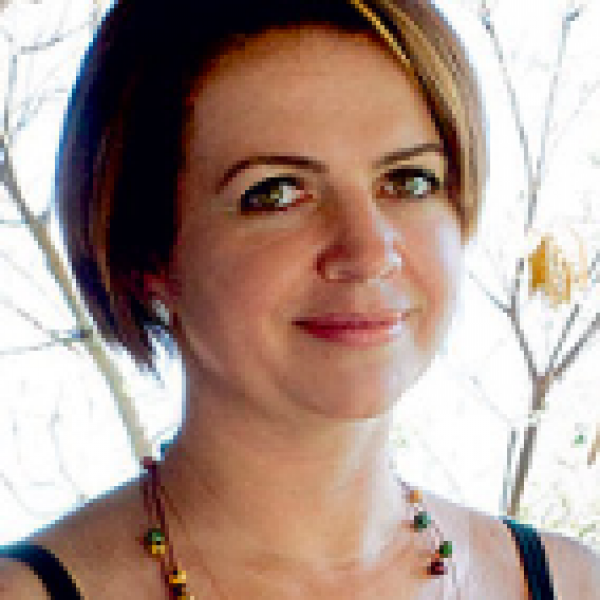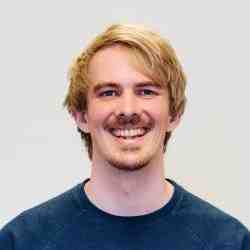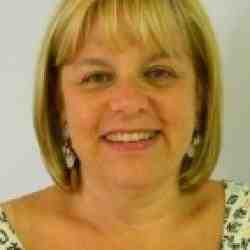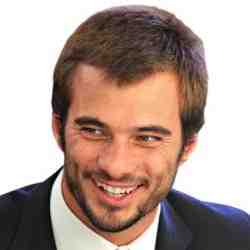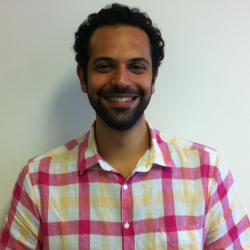Introduction
With the project Arquiteto de Família (Architect of Family), she seeks to promote technical assistance for project design and construction of housing improvements housing autoconstructed to promote healthy housing. The houses targeted by the action of Mariana are households with low standard of housing by not relying on technical assistance, with skilled manpower or resources to implement - especially for their conclusion (often getting in half). The methodology Mariana tries to eliminate the pathologies of the building causing damage to health and endanger the safety of the family as a means of promoting the quality of life.
The New Idea
Mariana is creating a new brand of architecture in a country where low-income families do not have access to materials and equipment for housing. The Arquiteto de Família (Family Architect) project seeks to deliver technical assistance in project design and home improvement to promote healthy housing to a portion of the population that would customarily see such benefits as a luxury. The households targeted by Mariana’s initiative have no means of accessing technical assistance, skilled manpower, or financial resources to improve or renovate their homes, which often remain half-built, posing a myriad structural threats to their dwellers. As a means of promoting a better quality of life, Mariana’s methodology tries to eliminate the poor conditions of the building that damage health and endanger the safety of the family. Furthermore, she is changing the architectural approach to focus on homes and spaces inside the house as opposed to just urbanization and improvement of public spaces.
Arquiteto de Família uses a personalized approach in which architects meet with each family to discuss what changes need to be made in the house and what the household priorities should be. Beyond reestablishing the social function of the architect as a guarantor of the quality of the living space, Mariana is creating new means of making building materials available for people with incomes lower than Brazilian minimum wage levels (approximately US$933/month) to access the resources needed for quality housing. For instance, to overcome high price barriers in the construction industry, Mariana has built a new marketplace based on the principles of Fair Trade using Tetra Pak cartons (juice and milk cartons) as currency. These cartons become new building materials: roof tiles that heat up the space more efficiently than the asbestos tiles that are present in approximately 50 percent of Brazilian homes.
Mariana’s method is not about imposing an outsider’s view but rather educating the family about their health and well-being. Ultimately, the engagement with the Arquiteto de Família team helps nurture closer, stronger bonds within the family and helps sensitize them to better use their personal space. Mariana has plans to expand her work throughout Brazil and in other low-income communities around the globe.
The Problem
According to the 2010 Brazil census, 11,425,644 Brazilians (or 6 percent of the population) live in favelas or what are officially known as “subnormal agglomerations.” These communities are home to most of the country’s 60 to 70 percent of informal structures, buildings that were never approved by any legal body and that, normally, have infrastructural problems ranging from no water supply and sanitation to illegal electrical supplies to public safety problems. These are, however, issues that could be resolved with one of the many government programs, such as the federally funded Growth Acceleration Program, which invested $248 billion dollars between 2007 and 2010 in construction, sanitation, energy, transport, and logistics projects nationwide and will invest another $470 billion dollars between 2011 and 2014 in similar programs. With such questions resolved, according to theories formulated by agencies such as the Inter-American Development Bank, each family would then construct their own home improvements, thereby elevating living conditions throughout the community and the city. However, while repairs are being made in public spaces, restorations within individual homes are the responsibility of the family, and in most cases, the families do not have the conditions to make them.
Several reasons exist that explain this situation. First, building materials in Brazil are extremely expensive. Consequently, priorities switch to what might bring quicker gratification or solve more immediate problems upon investment of their scarce resources. Second, families are so accustomed to living in precarious conditions that they do not feel motivated to change their dwellings on their own. It seems normal that houses are built too close together and that they do not have windows, appropriate ventilation, access to light or even an adequate bathroom. The concept of having suitable spaces for each member of the family, or at least that some measure of privacy is crucial for good family relations, sounds like a luxury to many in this community. Having a roof over their heads seems to suffice.
With governments, multilateral agencies, and society as a whole having established that what concerns the home is not a public issue, the responsibility for making necessary repairs to the home has fallen into a vacuum: an issue that concerns no one in particular. With urban populations growing in Brazil very quickly—from approximately 50 percent in 1970 to 84.35 percent in 2010, according to the census—there has never been much planning to receive migrant populations that flocked to cities in search of better opportunities. This created communities with a host of problems that the government is trying to solve, to little avail, with expensive infrastructure programs.
The Strategy
Mariana’s strategy begins with community meetings in which her team presents the whole project, ranging from full to possible individual defects of a house, such as leaks, cracks, poor ventilation or light, fungi on walls, inadequate roofing or floors, no space for the whole family, and repairs left unfinished because resources ran out. People can speak up if they “know of case examples.” In this manner, instead of feeling exposed publically, a person can offer the case of a neighbor, a friend or a family member. People naturally, though, often talk about defects in their own homes. Mariana’s staff of interviewers, many being local youth she trains, makes diagnoses within the community regarding where they think major investments should come from and how responsible they feel for their environment. Together they define the criteria for eligibility and which homes should be prioritized.
Next, the focus changes from the community to the individual families. Here the architect’s role becomes crucial to the project’s success. Social workers and engineers accompany the architect during home visits where they make personalized diagnoses and bring up specific needs in order to develop the first studies. Once they discuss findings with the homeowners and receive a final joint approval, they design the executive project phase by phase so as to ensure that each phase will be completed—and not left half-built due to lack of funds.
The actual building materials are bought at the Trade Fair, a marketplace Mariana devised for actual transactions of construction supplies that is accessible to the families involved in her project. Leroy Merlin, a construction firm, donates goods to Arquiteto de Família with minimal defects that it could not sell. These are then sold at the Trade Fair or, in the case of cook-top stoves, air conditioners, and other appliances, sold to or auctioned among her co-workers so that basic construction items can be bought for the fair. At the fair, families do not spend money but, rather, a currency based on Tetra Pak (juice and milk) cartons at the rate of four 1,000 ml cartons to 1 Trocado Vital, the basic currency unit. As a basis for comparison, one sack of cement is worth 20 Trocados Vitais or 80 TetraPak cartons.
Recently, TetraPak established a partnership with Arquiteto de Família in which the cartons are returned to them and they pay to recycle the material into tiles that are then donated to the fair free of charge, lowering costs for all involved. More than having vital building material available to them, this partnership has been helping shape people’s view of what resources are. What used to be an inadequately disposed item in many favelas, TetraPak cartons, is now seen as an asset. Additionally, Mariana works with construction companies who donate used building materials before the demolition of a building.
Mariana’s strategy has caused changes that go beyond the obvious physical renovations of homes to more subtle behavioral changes in many communities. She is preparing architects to listen and think with clients about their real needs and priorities; putting quality of life and healthy living ahead of aesthetic concerns. Mariana created a course outlining her tools and methodologies that is currently being taught at a university in Rio de Janeiro. Through this framwork, families are suddenly finding themselves as the agents of their own life transformations. They do not need the government to make the changes they wanted and needed for so long; they can actually make them on their own. Further, by renovating the homes, Mariana’s work is naturally increasing the value of the homes and market value of the communities.
As a pilot project, Arquiteto de Família has been implemented in 100 houses in the community of Vital Brasil, a favela located across the street from the Instituto Vital Brasil and which was formed at the time of the institute’s creation. This experience was enough to convince the American Planning Association, who is financing the replication of Arquieteto da Família, that her project is a possible global solution for communities similar to the ones she works with in Brazil.
With six full-time employees, the project has been supported in great part by Instituto Vital Brasil as its corporate social responsibility program—a way of taking responsibility for the people who helped build its facilities many decades ago and who still work on its premises in many capacities. Mariana’s relationship with the institute’s administration is very close and stable but she is seeking other ways of financing the project to guarantee its sustainability and expansion to other houses in the same community and beyond.
For the future, Mariana sees this pilot as a model of urbanization and a reference for many other communities and favelas throughout Brazil and the world. She believes that it will serve not only to change the lives of low-income communities and families, individually, but also the education of architects so that they can provide this type of service to society at-large.
The Person
Mariana knew from a very early age that she had an important mission in life; one that was inextricably linked to the complex country of her birth. In her early teens, during a period in which so many Brazilians dreamed of an easier life in a European country she, a dual German citizen, declined the opportunity to live in Germany because she believed she had work to do in Brazil.
The daughter of an advertising executive and a doctor who took neighbors into their home for treatment, Mariana inherited her father’s technical eye and her mother’s empathy. Deciding advertising was not for her (since there was no market at the time for selling causes as opposed to products), she chose architecture at the Federal Fluminense University, historically recognized for teaching architecture as a social function rather than an aesthetic one.
Working for the Favela Bairro project, carried out in Rio de Janeiro between 1993 and 2000 and co-financed by the IDB with the objective of taking basic infrastructure to low-income communities, Mariana witnessed the frustration felt by many families once they found out that improvements stopped at their doorsteps. Against the advice of co-workers, Mariana accepted the invitation of women—mostly mothers—who wanted her to see the conditions they lived inside their homes. Mariana was appalled and outraged by what she considered a calloused absence by the authorities, who deemed that anything happening inside a home is the sole responsibility of its owners or outside the public domain. Mariana observed that although some assistance was being given to low-income communities, all of it stopped at the doorstep of a home.
For her graduate studies, Mariana chose public health engineering, aiming to work in favelas. She realized, however, that good sanitation programs were not enough to promote better living conditions for the dwellers of low-income communities. In the molds of a public attorney, Mariana then devised the idea of the “public architect” in 2001. She presented the idea to the director of the Center for Architecture and Urbanism, in Rio de Janeiro, who envisioned her wish as something closer to a family doctor, thus inspiring Arquiteto de Família, a family architect. Though he was interested, there were no funds available, so she founded, Soluções Urbanas, in 2002 to raise funds for the project. During this time she worked as a volunteer for years, testing her project and methodology in a favela in Rio’s southern zone, though the actual construction never happened.
Mariana finally saw her dream come into fruition in 2007 through the Instituto Vital Brasil, when she was invited by the president to implement the project as an action of the Institute’s Corporate Social Responsibility Program. With her great ability to bring people together and persuade them toward an end goal, Mariana convinced the Ministry of Cities to implement a grant related to the government’s Growth Acceleration Project in the community. Such an accomplishment, one of many that Mariana has had, is just simply for Mariana the culmination of her dreams as a teenager wanting to change her country and build a better life for others.
